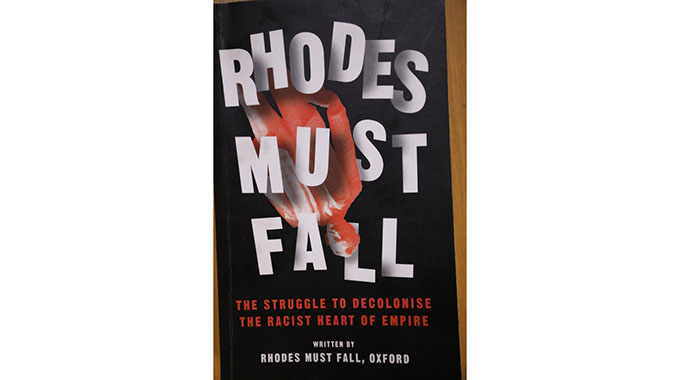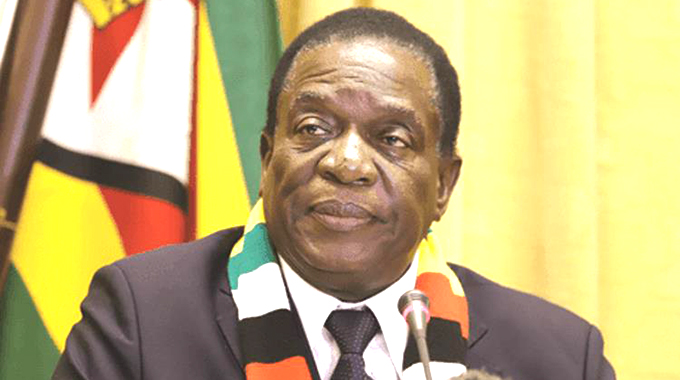In our lifetime, Rhodes must fall

Ranga Mataire
Writing Back
There is a raging world-call for people to wake up to the unpropitious existence of colonial statues regally celebrating historical figures most of whom were responsible for the subjugation and dehumanisation of other races during slavery and colonialism.
While most might think the momentum to dismantle statues that celebrate the subjugation of black people worldwide was spurred by the death of George Floyd at the hands of a police officer in the United States, truth is that the campaign to dismantle such figures has been an ongoing crusade particularly in Zimbabwe which hosts the grave of Cecil John Rhodes.
Long before the advent of #BlackLivesMatter, Twitter, Facebook, Instagram and WhatsApp, there existed a vibrant young man by the name Lawrence Chakaredza.
Chakaredza who later changed his name to Munhumutapa III, was a radical ex-University of Zimbabwe student who led a campaign to have the remains of Cecil John Rhodes at the sacred Matopo Hills to be thrown into the Zambezi River.
Although Chakaredza’s campaign through his Sangano Munhumutapa organisation did not gain much support, the rationale behind the dismantling of Rhodes’ grave was simple.
Matopo Hills is a sacred place where the revered Zimbabwean foundational spirits reside.
The existence of Cecil John Rhodes at the apex of the Matopo Hills is therefore a direct desecration of the sacredness of the place.
The existence of Cecil John Rhodes is an affront to the existence of black people in Zimbabwe as the British imperial agent represents a celebration of the dehumanisation of Africans.
Located in the southern part of Zimbabwe, Matopo Hills represents God’s ingenuity as the rock formations extend for more than 3 000 square kilometres marking crucial stages in human history and evolution reaching to 100 000 years ago.
Matopo Hills is associated with the Mwari religion.
Rituals like rain-making were and continue to be carried out there through the centuries.
The rock formations encompass sacred sites that include pools, hills, wetlands, the Njelele, Dula and Zhilo shrines these continue to host national regional pilgrimages to this day.
It was because of the sacredness of the area that Chakaredza (may his soul rest in peace) describes “Rhodes’ choice (as a burial place) as an act of cultural aggression to a holy place and to African religion.”
Chakaredza’s quest was to “seek the restoration of revered African sites, starting with the Matopo Mwari Shrine.”
Years after the death of Lawrence Chakaredza, the debate on the dismantling of colonial relics has taken a life.
Governors at Oxford University, an institution that embodies all the petals of Britain’s heinous colonial acts in Africa and the world over, have voted to have Rhodes’ statue removed.
Campaigners have called for the statue to be taken down because it symbolises imperialism and racism.
The Rhodes Must Fall campaign began in South Africa, where a Rhodes statue was removed.
When students at Oxford University charged that Rhodes’ statue be removed following similar calls by Cape Town students in South Africa, the impact of these protests reverberated across Africa.
This was not merely about shredding down an apparent symbol of British imperialism, but about facing up to the poisonous heirloom of the past, and defying the colonial dogmas that pervades universities and most public spaces in Africa.
Rhodes has a connection with Oxford University.
He was a student and a member of Oriel College in the 1870s and left money to the college on his death in 1902.
A scholarship programme in his name has over the years been awarded to more than 8 000 students.
This is a man who in 1877 made a confession about his disdain of Africans when he said:
“I contend that we are the first race in the world, and that the more of the world we inhabit the better it is for the human race.
“Just fancy those parts that are at present inhabited by the most despicable specimen of human being, what an alteration there would be in them if they were brought under Anglo-Saxon influence.”
Dear reader, this was well after slavery had ended when Rhodes was peddling racist statements about his creed being the “first race” and calling Africans “despicable”.
While the rest of the world is reviled by the continued public display of Rhodes statues, the situation must be even more repulsive in Zimbabwe which has the colonialist’s grave.
To show that Rhodes had no regard for Africans, their identity, cultural beliefs and their humanity; he chose the top most of a central granite outcrop, known as Marinda-Dzimu Matosi-po, or what he called World’s View to be his grave.
As if this is not enough, King Mzilikazi’s grave lies 15km away, down in an obscure grave, to certify his lower status to that of Rhodes.
So today, even in death, Cecil John Rhodes is lying on top of Mzilikazi, a victory of some sort acting as a continued conquest of, if not an insult to all Zimbabweans.
While we acknowledge that colonial history is part of Zimbabwe’s identity with Rhodes being part of the historical landscape, there is no justification why Rhodes’ remains must not be removed and put in some museum in Britain where his kith and kin can pay homage as they so wish.
The argument that Rhodes’ grave is good for tourism is an ephemeral view that disregards foundational issues that define a nation and future generations.
Why should we put so much value in Rhodes’ grave and not seek to identify and venerate Lobengula, Mzilikazi, Chaminuka, Mkwati, Mbuya Nehanda, Mapondera and many others who have an umbilical cord directly linked to us?
It is a tragedy of monumental levels that children are learning more about Rhodes than Zimbabwe.
Most history books in Zimbabwean venerate Rhodes as an important historical figure who was a financier of colonialists and forcibly took lands by conquests on behalf of the Queen.
We acknowledge that a lot had been done in dismantling symbols of colonialism since independence in 1980. Salisbury was renamed Harare, Fort Victoria became Masvingo, Gwelo became Gweru with Sinoia becoming Chinhoyi.
For the sake of future generations, Zimbabwe’s decolonisation agenda must never run out of steam. The Victoria Falls, a prime tourist attraction is still misnamed Victoria Falls.
Rhodes’ grave and statues around the continent, have no place in modern Africa, less so at a venerated place like Matopo Hills. Any symbols to do with him must be relegated to museums.
Removing the physical codes of colonialism from Zimbabwe is not denying our history.
It is not appropriate that his place in our history continue to be that of a philanthropist who brought civilisation.
Slavery and colonialism go beyond physical subjugation and domination. They both manifests in subtle and insidious ways.
This is the reason why Bob Marley’s clarion call was for Africans to “emancipate themselves from mental slavery”.









Comments